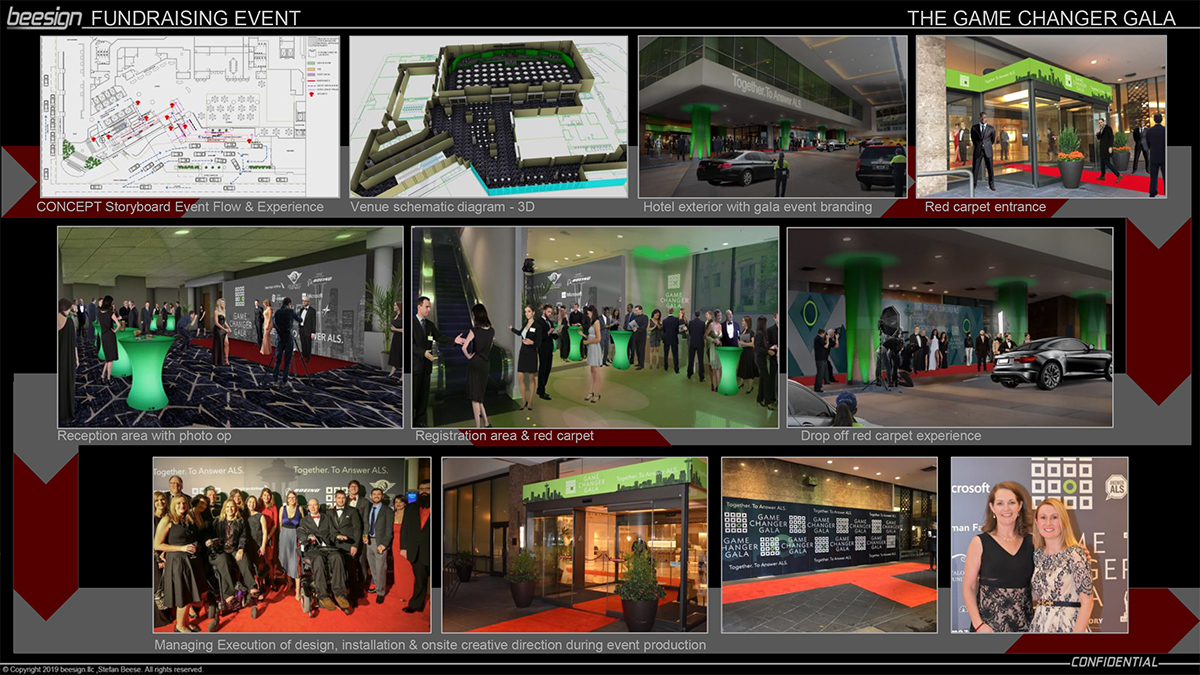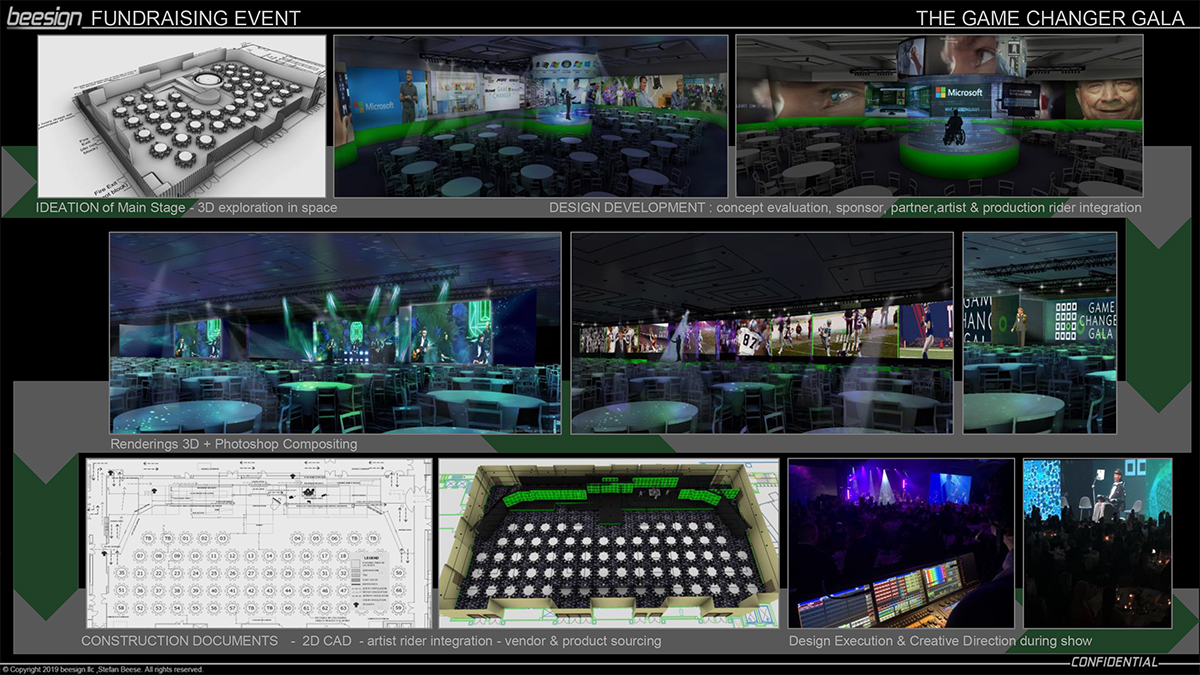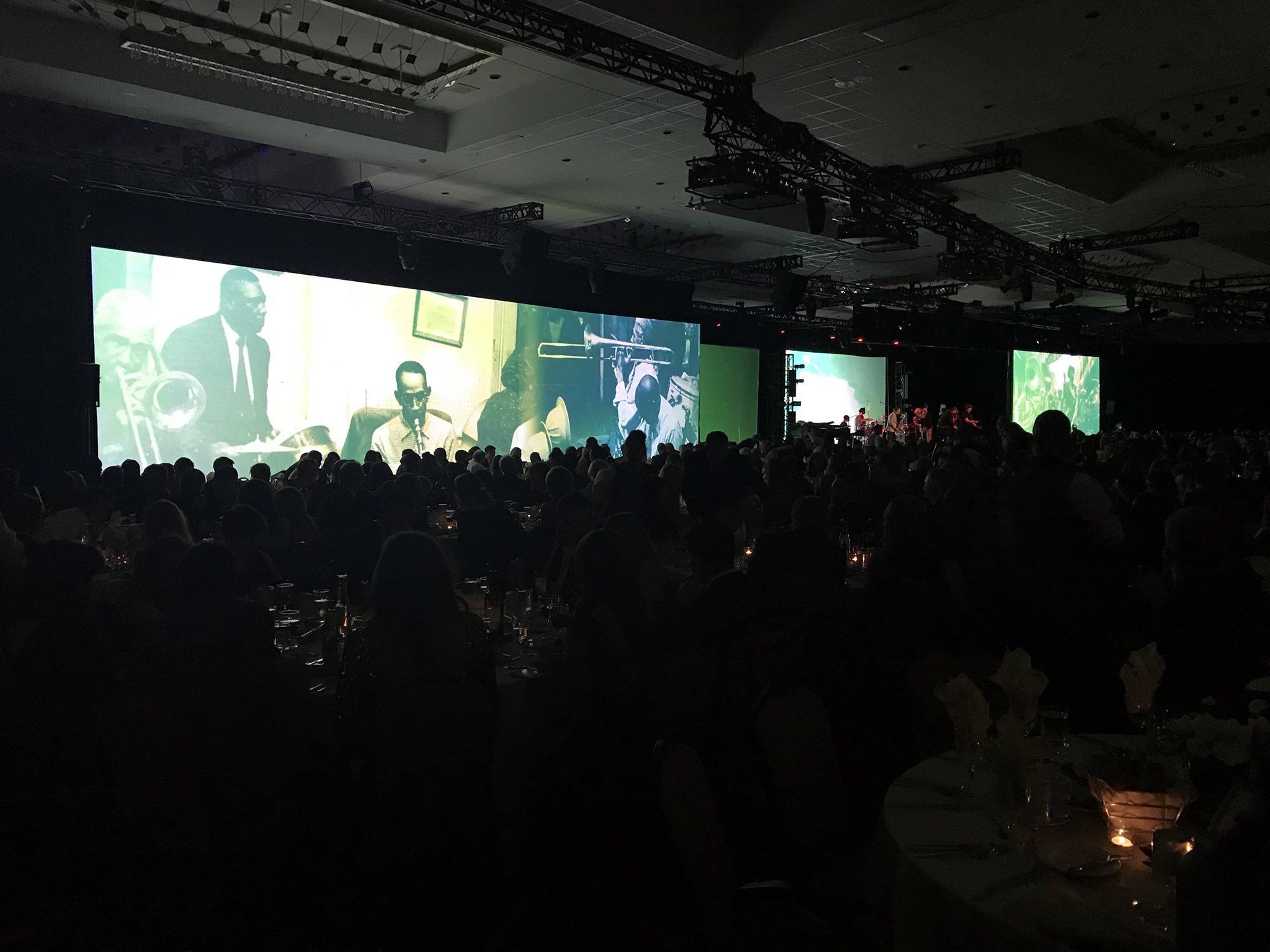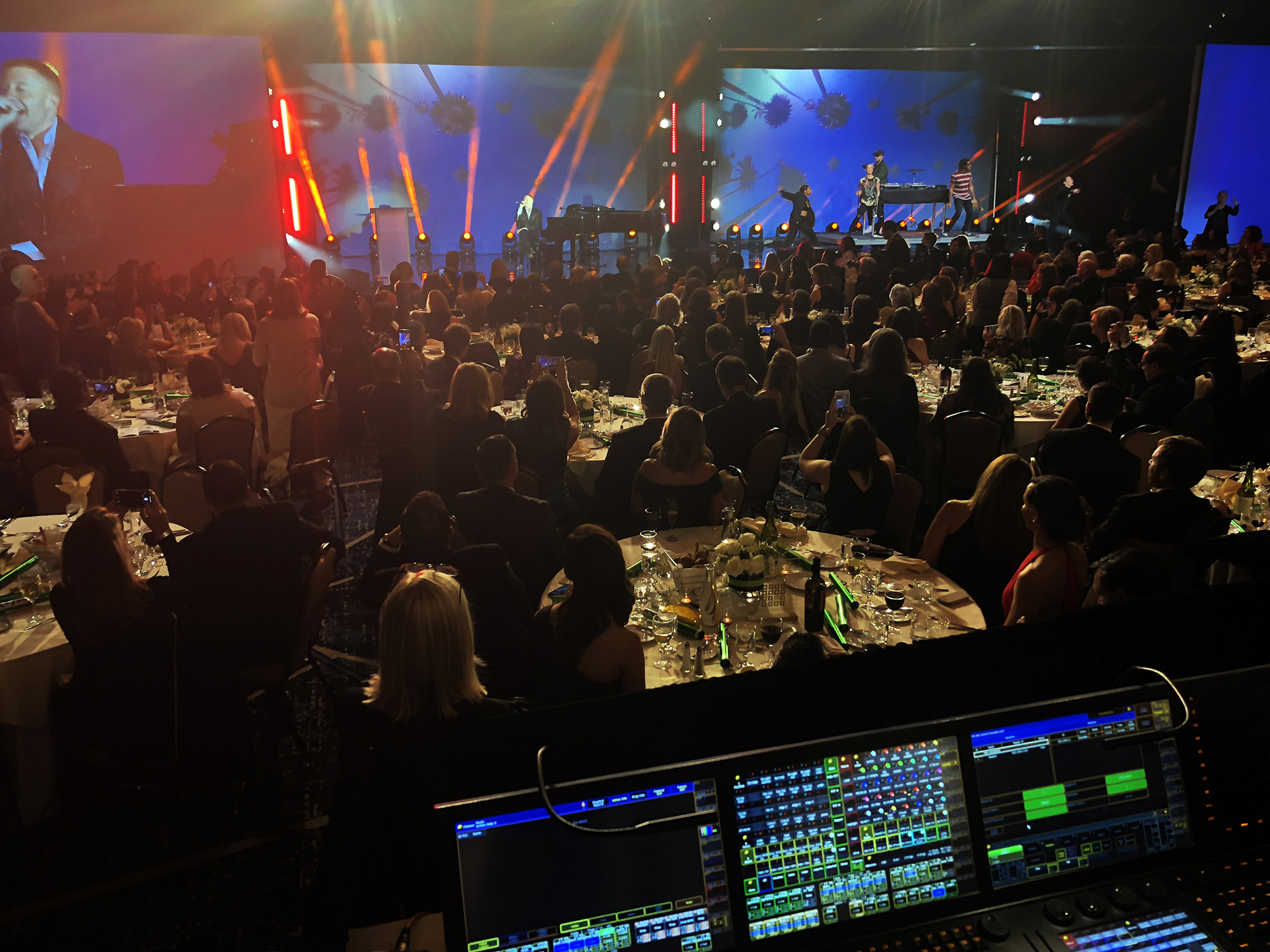Five years after my role as the production designer for Brad Pitt’s inaugural “A Night To Make It Right” fundraiser gala, I was honored to be the production designer for another rewarding fundraiser gala, “The Game Changer Gala,” held in Seattle on November 9, 2018. The Game Changer Gala team, organized by Team Gleason and the Answer ALS Foundations, drew from our fundraising experience to produce a star-studded event that raised $3.3 million to help empower people who are living with Amyotrophic Lateral Sclerosis (ALS) while also seeking a treatment or cure.
Celebrities traveled from around the world to participate and perform at the gala. Hosted by Harry Connick Jr., the event featured a cocktail hour, dinner, performances by Preservation Jazz Hall Band, Judith Hill & Choir, Lord Huron, Macklemore, Mike McCready & Friends, and a live auction. Steve Gleason, former Saints Football player who was diagnosed with ALS in 2010 and founder of Team Gleason and the Answer ALS Foundation, was the driving force that pulled everyone together for the event. Steve Gleason even contributed to the musical entertainment with two songs he wrote that were performed by Mike McCready at the event.
Design Process
Four months prior to the event, I received a call from Stephen Rehage and was briefed that this event would be very similar to what we did for “A Night To Make It Right” gala. I jokingly thought, “Oh, we try to squeeze another mini festival in a ballroom, with low ceiling and limited rigging points.” In the end, that is what we accomplished.

The first order of business was to conduct multiple site visits in Seattle with Clare Durrett from Team Gleason and the Answer ALS Foundation. Clare spearheaded the search for location and sponsorship outreach. We initially booked a ballroom at the Sheraton Hotel, Seattle Downtown, but quickly realized that the room wouldn’t be able to hold the growing production volume from all the talent that was being brought on board. We decided to switch to the Sheraton’s largest ballroom, which allowed us to book the entire 2nd floor and create our own festival-like security perimeter. This proved essential to create multiple green rooms and backstage production areas. We also created a red carpet reception in a portion of the first floor.
With only a four-month timeframe, I began the design process without delay and immediately focused on the basic elements of “The Game Changer” promo video featuring several game-changing moments in NFL history, including the famous blocked punt by Steve Gleason during the New Orleans Saints first home game after Hurricane Katrina in 2006 that became a symbol of rebirth for New Orleans.
I started creating timelines of Game Changer Moments associated with our partner and initial sponsors: Aviators Against ALS, Microsoft, Amazon and Caterpillar. It became clear that this was going to be a very content-heavy show and that we needed to find the right medium to fuse the usual gala elements such as guest speakers and live auction moments with a festival-like performance stage. I was given a blank canvas to work with and chose to adopt the following motto, “You need to reach for the stars to get to the mountain top!”

The team first needed visuals to approach artists and sponsors for the Gala by creating look books and mockups to present to potential participants. My initial designs focused around a large-scale timeline ribbon, with filmstrip-like surfaces that would wind throughout the reception areas leading up to the ballroom where it wrapped around the perimeter walls to form the stage area by combining IMAG and projection surfaces and embedding multiple ramps as wheelchair-friendly stage access.
Once the line up and run of show started taking shape, it became clear that our TV show format of rotating interviews, house band, and performances was not going to work. I started redesigning, keeping our Game Changer/timeline ribbon idea in place, but cutting back on the size and complexity. At the same time, interest in the Gala was spreading, and we realized we were going to need many more tables in the room than initially estimated. At this point, changing locations wasn’t an option so we had to adjust the design to accommodate our growing needs.
We modeled the Grand Ballroom and second floor of the Sheraton in 3D CAD to explore several iterations of the adjusted timeline ribbon designs. Due to the very limited rigging capacities in the Grand Ballroom, we decided to switch from LED walls to lightweight fabric surfaces, and use front projections for the stage left and right walls and rear projections for the upstage walls.
Technical Details

We decided to use a large, sliding, projection wall at stage left closest to the loading ramp of the hotel to create the festival-like performance area without having set changes interfere with the Gala show flow. The sliding panel was built to look the same as the static, stage right projection wall using a 56' x 13' borderless aluminum frame system supplied by Codini Creations and installed by R90 Lighting. The sliding panel measured 33' x 13' on track and was manually moved during band reveal moments and tucked behind a static 23' x 13' stage left projection surface. During performance moments, the IMAG window switched to fill out this entire surface, and during speaker moments, the IMAG window was minimized to the sliding panel closer to the stage opening to create a more intimate setting.
The entire stage surface became one large projection surface, referred to internally and in ROS as “ribbon fill,” when no IMAG window was present. The large 56' x 13' projection surfaces were angled towards center stage, and the banquet table seating followed the same angle to create better sight lines throughout the room.
We chose to use front projection with 10:16 Panasonic PT-DZ21K HD projectors for the 56' x 13' stage left and right ribbons because the production needs behind the stage prevented us from using rear projection. We were able to utilize rear projection for the ground supported 24'x 13' center and upstage left stage surfaces using 4K Panasonic Laser (PT-RQ32K) projectors mounted parallel on lifts with a D75LE90/95 - 0.36:1 - Panasonic Fixed Projection Lens.

Lighting was provided by R90 Lighting on four horizontal ceiling truss configurations, joined together to accommodate the mounting points for the fabric projection panels. Joe Cole worked directly with in-house company PSAV on the rigging configuration to make our design work by maximizing rigging points and loads within the ballroom. In addition to ceiling rigged fixtures, we placed four upright light towers on stage to frame each upstage screen, featuring Robe LEDbeam 150s and GLP X4 Bar 20s controlled by an MA Lighting grandMA2 lighting console. Derek Zanto programmed and ran show lighting during the gala.
Stay tuned for Part Two on the show!
Credits
Production Designer & Creative Director: Stefan Beese
Producer: Stephen Rehage and Clare Durrett
Production Manager: Chris Eberle
Content Creation, by CineArc & beesign
beesign
Creative Director: Stefan Beese
CineArc
Director: Charles Hellwig
Designer: Marcus Jessen
Designer: Sterling Walston
Sr Animator: Joshua Brantley
Jr Animator: Connor Cook
Lighting, supplied by R90 Lighting
Lighting Lead: Jessika Palmer
Programmer: Derek Zanto
Crew: Terra Duggan, Rachid Schultz, Davis Alexander
Projection Screens, supplied by Codini Creations
Lead Carpenter: Todd Weir
Carpenters: Ryan Weir
Projection, supplied by LMG
Crew
E2 Operator: Ben Nash
EIC/ Shader: Joel Clare
TD/Switcher: Paul Thomson
D3 Engineer: Joshua Stuart
D3 Operator: Charles Dabezies
Stefan Beese is the owner of beesign, a production and entertainment design company in New Orleans, LA.